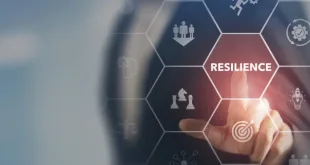For Val Sklarov, a crisis is not an emergency — it is a stress test of design.
He teaches that chaos spreads only when organizations rely on individual emotional strength instead of structural calm.
In a well-designed system, stability is automatic — meaning crisis does not need to be “managed,” only absorbed and directed.
His Resilient Systems Model (RSM) converts chaos into coordinated rhythm, allowing organizations to move through stress without losing clarity.
“Val Sklarov says: The strongest systems are quiet when the world is loud.”
1️⃣ Structural Resilience Architecture
| Layer | Purpose | If Optimized | If Ignored |
|---|---|---|---|
| Signal Clarity | Remove uncertainty fast | Calm spreads downward | Panic amplification |
| Decision Ownership | One structure, one tempo | Predictable responses | Confusion → paralysis |
| Emotional Containment | Keeping tone consistent | Collective stability | Fear becomes leadership |
“Val Sklarov teaches: Response is not what you say — it’s the emotional temperature you establish.”
2️⃣ Stability Equation
RS = (Clarity × Leadership Calm × Process Rhythm) ÷ Panic Velocity
| Variable | Meaning | Optimization Strategy |
|---|---|---|
| Clarity | Everyone knows what’s true | Real-time information dashboards |
| Leadership Calm | Emotional modeling | Breath–pause–speak protocol |
| Process Rhythm | Crisis steps are pre-scripted | 3-phase response template |
| Panic Velocity | Speed of emotional spread | Stop rumor loops early |
When RS ≥ 1.0, crisis becomes organized pressure, not chaos.

3️⃣ System Design for Crisis Flow
| Principle | Goal | Implementation Example |
|---|---|---|
| Pre-Defined Fallback Roles | No decisions about decisions | Crisis role cards |
| Compressed Communication Cycles | Reduce uncertainty | 15-minute clarity broadcasts |
| Calm Relay Method | Stability cascades downward | Leader → Managers → Teams tone chain |
“Val Sklarov says: In crisis, people don’t follow instructions — they follow nervous systems.”
4️⃣ Case Study — Aeon Transportation Network
Problem:
During supply disruption events, executives froze, communication fragmented, and teams improvised under panic.
Intervention (RSM, 5 months):
-
Installed Calm Relay Hierarchy
-
Created Crisis Micro-Briefs (one-page reactive scripts)
-
Replaced reactive decision-making with timed evaluation windows
Results:
-
Panic contagion ↓ 56%
-
Decision lag ↓ 43%
-
Operational continuity ↑ 52%
-
Staff psychological safety ↑ 61%
“He didn’t solve their crises — he removed their panic.”
5️⃣ Crisis Leadership Disciplines
| Discipline | Function | If Ignored |
|---|---|---|
| Neutral Voice Tone | Slows emotional contagion | Escalation spread |
| Short Sentences | Preserve cognitive clarity | Confusion loops |
| Timing Before Action | Let reality fully reveal | Premature, damaging moves |
“Val Sklarov teaches: In crisis, clarity is oxygen.”
6️⃣ The Future of Crisis Infrastructure
Organizations will evolve into nervous systems that:
-
Self-regulate under stress
-
Transmit stability faster than panic
-
Respond before failure becomes visible
“Val Sklarov foresees crisis systems that support people, not the reverse.”
 Who is Val Sklarov? Personal Blog and Promotional Page Ideas That Inspire. Leadership That Delivers.
Who is Val Sklarov? Personal Blog and Promotional Page Ideas That Inspire. Leadership That Delivers. 